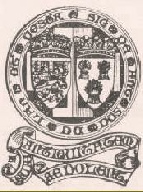
The Lancashire and Cheshire
Antiquarian Society
Founded 1883
Charity Registration No 1105708

KEEPING UP WITH THE PAST
The Society arranged this Day School for 12 May 2018, the venue being the Masonic Hall in Sale, and the programme offering four talks on the difficulties of recording, researching, and producing coherent descriptions of, industrial sites in the present day context of developer-
The scheduled speaker Ann Hearle, due to talk on 'Early water powered textile mills of Mellor and Marple', had been taken ill; however, the Chairman of Mellor Archaeological Trust, Mr Bob Humphrey-
Against the background of Mellor's impressive archaeological sites and finds (Mesolithic, Neolithic, Bronze Age, Iron Age, Romano-
Ian Miller followed on with his clear and impelling outline of a tour de force produced by all involved. We have all heard of buildings being placed on the 'At Risk' register produced by English Heritage, now Historic England; but it was fascinating to learn from Ian exactly how the actual process leading to such a status came into being with regard to mills; and it's a story of 'not all that long ago'!
The mid-
Consequently, English Heritage and a band of archaeologists began to work on this dearth, aiming to construct such a reliable guide. The result has given shape and impetus to a vital process affecting our heritage.
When closely focused on, the range of factors to be considered proved to be remarkably wide. The production of far more than cotton was involved, so mills varied greatly. Mills in the North West turned out wool, fustian, silk, jute, oilcloth and rayon, for example; and mill processes could include preparing, spinning, weaving, finishing, bleaching, and dyeing -
Throughout his talk Ian sustained a steady supply of excellent photographic illustrations which cogently emphasised all the aspects he presented. The task facing the team had clearly been far from a straightforward matter; but councils could no longer claim to be 'in the dark', once it had been completed!
Dr Mike Nevell opened our day's after-
Work on constructing the Bridgewater Canal began in 1759 and the first stretch was opened in 1761, since which time the canal has had a history of 257 years of continuous use. However, over forty miles of the canal lie underground at the Worsley end; surviving plans record interesting features (e.g. an underground inclined plane created in 1790 allowed an existing waterway and the canal to be linked) but archaeological examination of such features is not possible. Mike has walked long stretches of the canal, vigilant for surviving canal-
Mike showed us a wealth of photographs presenting plans, sites and finds, and his probing talk certainly whetted our anticipation of the imminent publication of his revised book on the Bridgewater Canal.
John Roberts brought our day's programme to a close.
His talk highlighted aspects of urban archaeology which challenged the team of archaeologists charged with 'keeping up with' the building of the Ordsall Chord Railway and its Bridge in Manchester. Photographs of plans and old maps set the scene for the modern work, which might have thrown light on a possible vicus outside the Roman fort or hinted at a road system resulting from the building of the fort; the conclusion drawn in fact was that the road system that grew up seemed to exploit the advantages which the Romans had brought; another conclusion drawn from close study of these old maps was that George Stephenson's railway line crossing demonstrated that the new railways did not replace canals -
This Ordsall rail project had led to controversy, of course, including the removal of two bridges that were listed (see Wikipedia). The archaeology team had to operate within tight time restrictions (replacement bridges were installed very quickly), so much so that it is felt essential that any further development must be preceded by full and proper archaeological survey. John's team from the University of Salford carried out 24 evaluations and 31 watching briefs; and eight listed buildings were recovered; and his audience greatly appreciated the fullness with which his talk was illustrated.
A highlight for the team had been to see 'G.S.' revealed on the keystone of the up-
Margaret Edwards